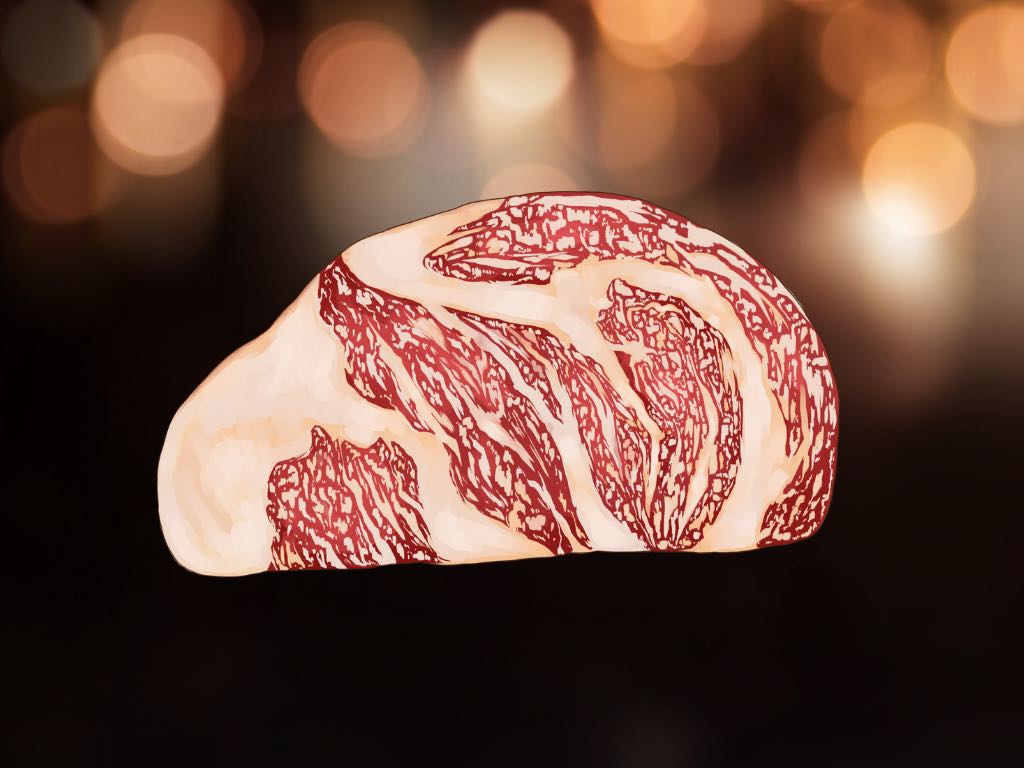
Understanding Beef Marbling Score: Decoding the Secrets of Flavor
|
|
Time to read 3 min
Welcome to One Stop Halal!
Written by: GrillMaster Arif
|
|
Time to read 3 min
The beef marbling score, or B.M.S., is a crucial factor that defines the quality and tenderness of beef. While you may have heard this term before, understanding its significance and implications can enhance your appreciation for premium cuts of meat. In this comprehensive guide, we will delve into the world of beef marbling score, exploring its definition, grading systems, impact on taste and texture, and why it matters to both chefs and consumers. Join us as we unveil the secrets behind this intricate art of superior beef.
Beef marbling refers to the white flecks of intramuscular fat found within the muscle tissue. The beef marbling score measures the abundance and distribution of this marbling within a cut of beef. It is a crucial indicator of the meat's tenderness, flavor, and overall quality. The higher the marbling score, the more succulent and flavorful the beef is likely to be.
The marbling score serves as a quantitative assessment of the marbling present in a particular cut of beef. It is usually determined by trained experts who visually evaluate the amount and distribution of marbling using specific grading systems. Grading systems may vary depending on the country or region, with each system assigning different scores or grades to reflect the level of marbling.
A higher marbling score indicates a greater degree of fat marbling within the muscle fibers. This higher marbling is often associated with premium and more desirable cuts of beef due to its positive impact on the eating experience. As the fat melts during cooking, it bastes the surrounding meat, increasing tenderness and juiciness. Additionally, marbling contributes to the rich and distinctive flavor of the beef, as fat is a carrier of flavor compounds.
Various countries employ different grading systems to assess beef marbling score.
For instance, in the United States, the USDA (United States Department of Agriculture) employs the Prime, Choice, and Select grading system, with Prime indicating the highest marbling score.
In Japan, the Wagyu beef grading system, which includes the famous Kobe beef, uses a scale from 1 to 12, with 12 being the highest marbling score.
Several factors contribute to the development of beef marbling. Genetics play a significant role, with certain breeds known for predisposing to high marbling, such as the Japanese Wagyu. Feeding and nutrition also influence marbling, as a balanced diet with appropriate levels of energy and nutrients promotes fat deposition. Age, stress levels, and proper animal handling can also impact marbling development.
The beef marbling score directly affects the taste and texture of the meat. The marbling enhances flavor by adding richness, juiciness, and a distinct umami character. Intramuscular fat contributes to tenderness as it melts during cooking, resulting in a moist, buttery mouthfeel. Higher marbling scores often result in more tender, juicy, and flavorful beef.
The beef marbling score plays a crucial role in culinary applications, particularly fine dining, and gourmet experiences. Cuts with higher marbling scores are often preferred for techniques such as dry aging, sous vide, and searing. These techniques preserve the integrity of the marbling and maximize the flavor and tenderness of the beef. For those seeking the ultimate indulgence, dishes featuring high-marbled beef, like Wagyu steaks, offer a sublime gastronomic experience.
As consumers become more knowledgeable about beef marbling scores, they can make informed choices and appreciate the value of high-quality cuts. Understanding the grading systems and the implications of different marbling scores empowers consumers to select beef that aligns with their preferences and desired dining experiences. Increased awareness also fosters a deeper appreciation for the craftsmanship and artistry behind superior beef production.
Understanding the beef marbling score is essential for both consumers and professionals in the meat industry. It helps consumers make informed choices when selecting beef cuts based on their desired tenderness, juiciness, and flavor preferences. For professionals, such as chefs and meat buyers, the marbling score assists in sourcing high-quality cuts and ensures consistency in delivering a superior dining experience.
The beef marbling score is critical to understanding and appreciating beef quality. From its definition and grading systems to its impact on taste and texture, the marbling score plays a vital role in determining beef's succulence, tenderness, and overall gastronomic experience. By recognizing this factor's significance and exploring its culinary possibilities, consumers and chefs alike can elevate their enjoyment and appreciation of premium beef cuts.

© 2025 One Stop Halal, Inc.